The musculoskeletal system is the most important part of our body. Often, back pain causes the need to see a doctor.
The cause of regular back pain, stiffness of movements and muscle spasms is osteochondrosis of the back - a disease of bone and cartilage tissue, as well as the musculoskeletal system, caused by various factors that affect the body.
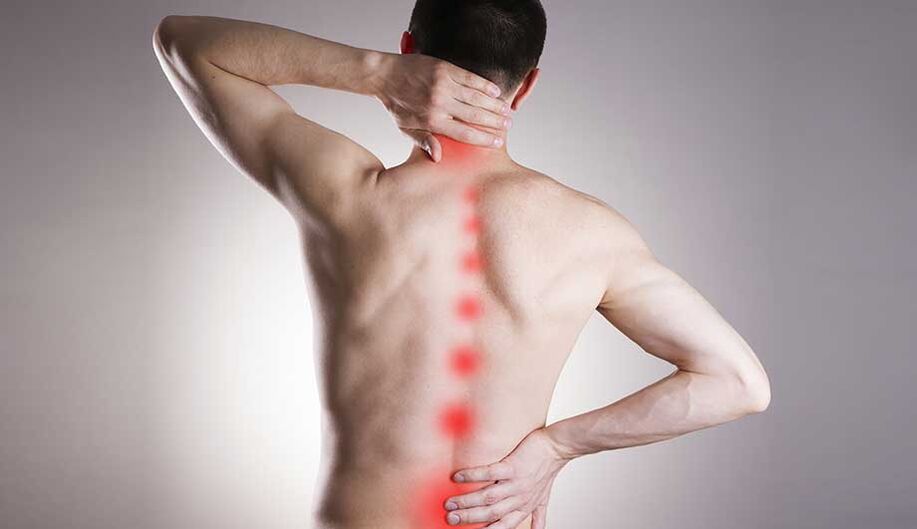
Osteochondrosis of the spine is a problem that many face.
Etiology and pathogenesis of osteochondrosis
Osteochondrosis of the spine manifests itself gradually, affecting in a latent form all the new areas of the spine. Initially, changes occur in the structure of the cartilaginous discs of the vertebrae: they lose elasticity, the space between the vertebrae shrinks, and the nerve endings of the spinal cord are damaged.
The patient begins to experience back pain. Subsequently, the changes transcend smaller elements of the vertebral structure, bone tissue growths of a degenerative nature develop, which impede the movement of the spine, healthy cartilage cells are destroyed, the disease affects the bones and ligaments. As a side effect, vertebral deformity provokes an increase in load on organs and arteries. This is due to the specificity of the blood supply - the displacement of the spinal segments causes compression of the vertebral artery and is, after all, the cause of a serious disturbance of blood flow to the central nervous system.

The main problem that causes violations of the formation of the spine and the process of osteochondrosis is the lack of nutrition and reduced blood supply to the tissues of the bone structure. The reasons for development are many factors of external, internal influences and processes of behavior of a person.
Endogenous (internal) causes include:
- genetic factors of heredity;
- violation of the metabolism of trace elements (phosphorus and calcium);
- cartilage tissue features;
- age-related changes in the body;
- excess weight;
- orthopedic diseases.
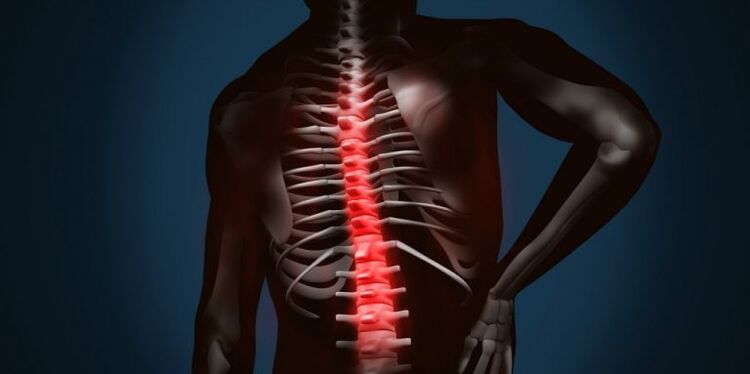
As a result of exogenous (external) causes and lifestyle, osteochondrosis develops as a result of:
- low level of physical development of back muscles;
- spinal cord injuries;
- improper posture, scoliosis;
- incorrect or uncomfortable systematic attitude;
- unbalanced diet, eating junk fatty foods;
- uneven physical strain, back overload;
- bad habits;
- constant stress.
The latent form of osteochondrosis can be manifested by a sharp rise in weights, jumps, falls, which will provoke microtrauma of the spinal disc and violations of the nerve root.
Then the patient may first feel a sharp shooting pain. In the future, the pain syndrome comes back again and again with different intensity. Affected nerve stem cells signal the need for urgent medical intervention.
Classification of the disease, the main stages
In medicine, osteochondrosis is classified depending on the affected area of the spine:
- cervix;
- chest;
- lumbar and sacral region.
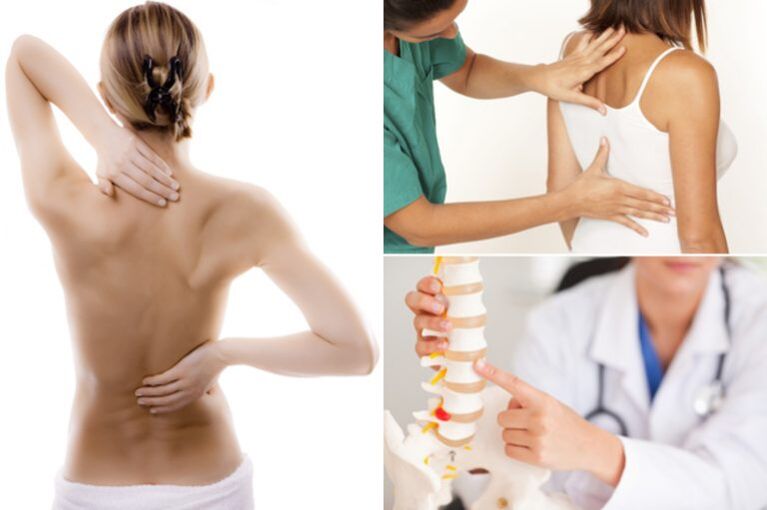
Osteochondrosis of the spine is classified depending on the affected area.
The main stages of disease development:
- The onset of osteochondrosis - microcracks form in the ring fibrosis, moisture is lost from the bone and cartilage tissue. The phase manifests itself with subtle discomfort in one of the spine areas after physical exercise or an uncomfortable body position.
- The first painful attacks make themselves felt. In the second stage, the discs undergo elongation, the intervertebral disc space is reduced and the fibrous capsule collapses, the nerve roots are compressed. Pain signals the process of metabolic disorders in cartilage tissue and its destruction. Ignoring the second stage of osteochondrosis becomes a trigger in inflammation of the cartilage and, as a result, violation of nerve fibers, blood and lymphatic vessels.
- In the third stage of the disease, the affected vertebrae are deformed, the cartilage tissues are erased. With proper active treatment, it is possible to stop further destruction of cartilage cells and curvature of the spine. But in the future, therapy and supportive care will become the patient's constant companions for normal physical activity.
- Initiated osteochondrosis, which has passed into the last fourth stage of development, often becomes the cause of disability. All destructive processes are irreversible: significant displacement of the vertebral structure, compression of cartilage tissue, pathological growth of bone tissue. The patient experiences acute pain, sometimes unbearable, with every movement.
Symptoms
Signs of developing osteochondrosis are easy to confuse with other similar diseases in symptomatology. Also, the symptoms of manifestation for a particular sector of the vertebral structure have characteristic features.
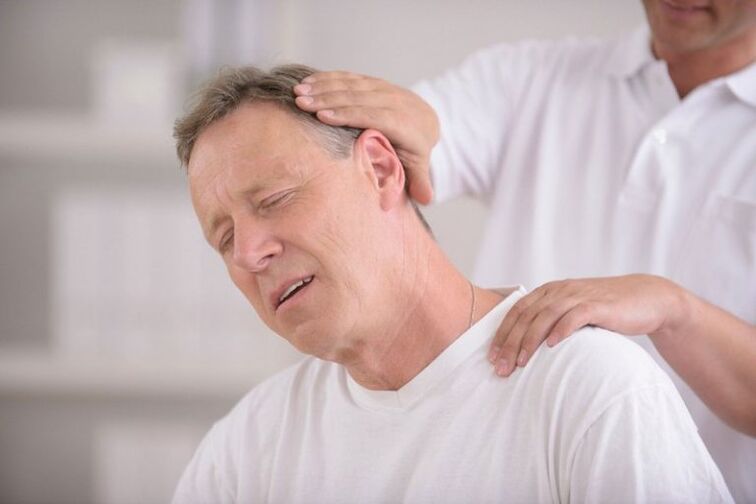
The main symptoms of osteochondrosis include:
- stiffness during movement, cracking, cracking or aggravation;
- pain in the area of localization of inflammation (cervix, chest or lumbar) of varying intensity and character;
- numbness of the limbs;
- muscle weakness, impaired performance;
- pain attacks, radiating along nerve channels in connected parts of the body (shoulder, shoulder blade, foot).
Osteochondrosis of the cervix
Osteochondrosis of the cervical sector is expressed in the following diseases:
- pain in the neck or back of the head;
- dizziness;
- tinnitus, hearing and vision impairment;
- slowness of the neck after sleep or holding the same posture for a long time;
- painful sensations when turning your head.

With cervical osteochondrosis, dizziness and painful sensations can occur when you turn your head. The appearance of the first painful sensations is noticed on the back of the head and is similar to the head. Inflamed cartilage pressures on nerve fibers, provoking vasospasm.
Chest osteochondrosis
The development of thoracic osteochondrosis can be disguised for a long time as cardiovascular disease. Its characteristic symptoms:
- violation of tactile sensations and numbness of the limbs;
- tingling sensation in the intercostal space;
- pain in the heart region, heart rhythm disturbances;
- restriction of respiratory functions, aggravation in the sternum;
- disruption of the gastrointestinal tract (pancreatitis, bloating);
- radiating pain to the scapular region.
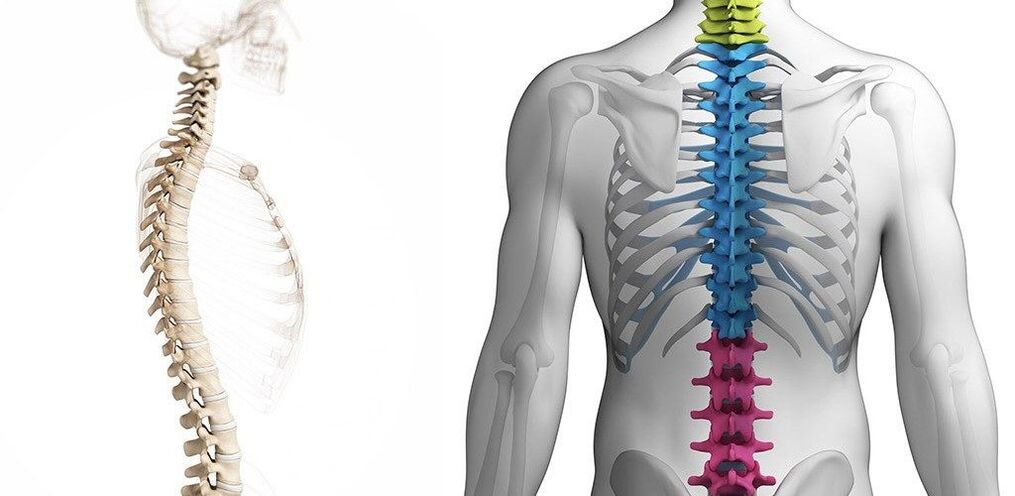
Lumbar osteochondrosis
Progressive lumbar osteochondrosis in an advanced form can lead to disability. The inflamed area of the spine stops supplying the necessary trace elements to the lower extremities for the full functioning of the joints and muscles. Captured nerve trunk cells cause excruciating back pain and the use of drug therapy.
The main symptoms of lumbar osteochondrosis include:
- numbness of the lower extremities;
- muscle pain, weakness;
- chills;
- muscle spasms;
- dysfunction of the reproductive system;
- the pain may be sharp or aching in the lumbar region, radiating to the legs.

diagnostic
On average, there are 20 people diagnosed with osteochondrosis per 1000 inhabitants. A disease such as osteochondrosis is difficult to diagnose in the early stages. Its symptomatology is quite hidden and is clearly manifested already only in 2-3 stages, when it comes time for serious drug treatment.
If there is a suspicion of the development of osteochondrosis, first of all, it is necessary to turn to the consultation with a specialist and make a comprehensive examination for the differential diagnosis and clarification of the diagnosis.
Doctors use three standard types of diagnosis:
- Neurological.
- Instrumental
- Laboratories.
The primary neurological examination of the patient is performed by a neurologist, determining the category of nerve structures affected by the disease. Also, to rule out diseases of a different nature with similar symptoms, the patient may be referred for X-ray, ultrasound, MRI and ECG.
Laboratories (Analysis)
Laboratory diagnosis is of advisory - auxiliary value. Blood tests show an increase in erythrocyte sedimentation rate and a decrease in calcium levels. This means the flow of pathological processes in the body, but does not indicate the specifics of their development. Therefore, this method is included in the comprehensive examination of the patient and its results are deciphered on the basis of other medical data.
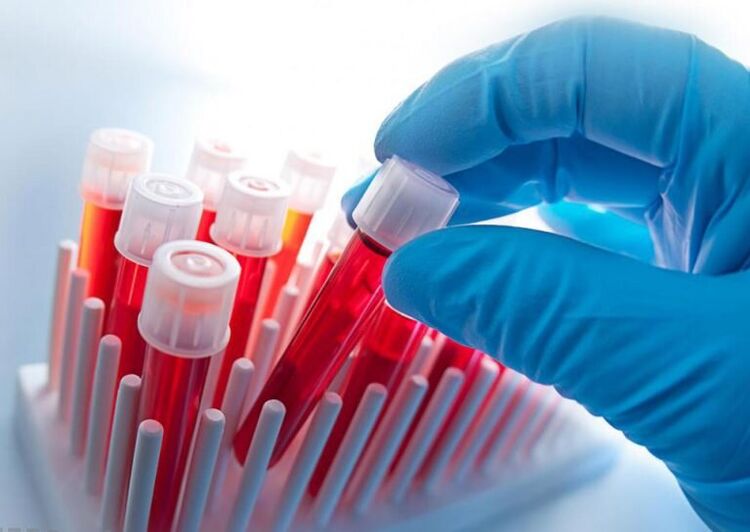
Instrumental
Diagnosis using professional equipment gives the most accurate results regarding diseases of a different nature. The main search tools are:
- X-ray - reveals anatomical changes in bones, cartilage, nerve tissue.
- MRI - Magnetic resonance imaging. It allows you to visualize the processes that take place in the bones and soft tissues, blood vessels and nerve fibers.
- CT (computed tomography) - similar to MRI, but produces radiation.
- Electromyography - is able to decipher neurological symptoms.
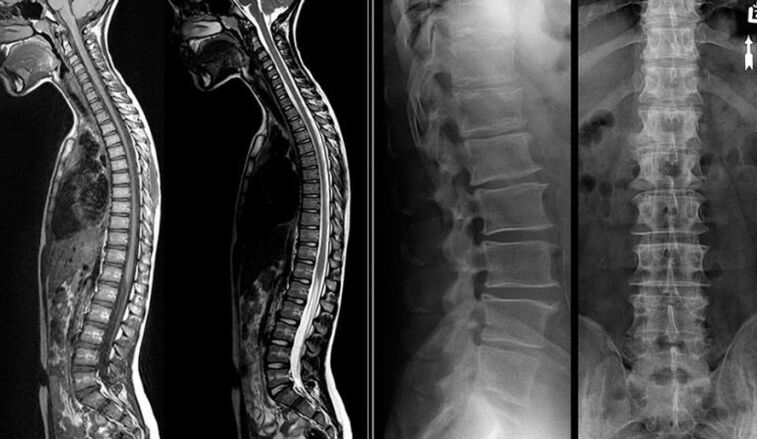
Traditional treatment
The treatment regimen for osteochondrosis is traditional. Its components are drug therapy through various directions: NSAIDs, chondroprotectors, analgesics, hormonal agents and vitamin support complexes. In addition to loading the body with drugs in the fight against osteochondrosis, physiotherapy, manual therapy, reflexology, surgery, massage and preventive measures are used.
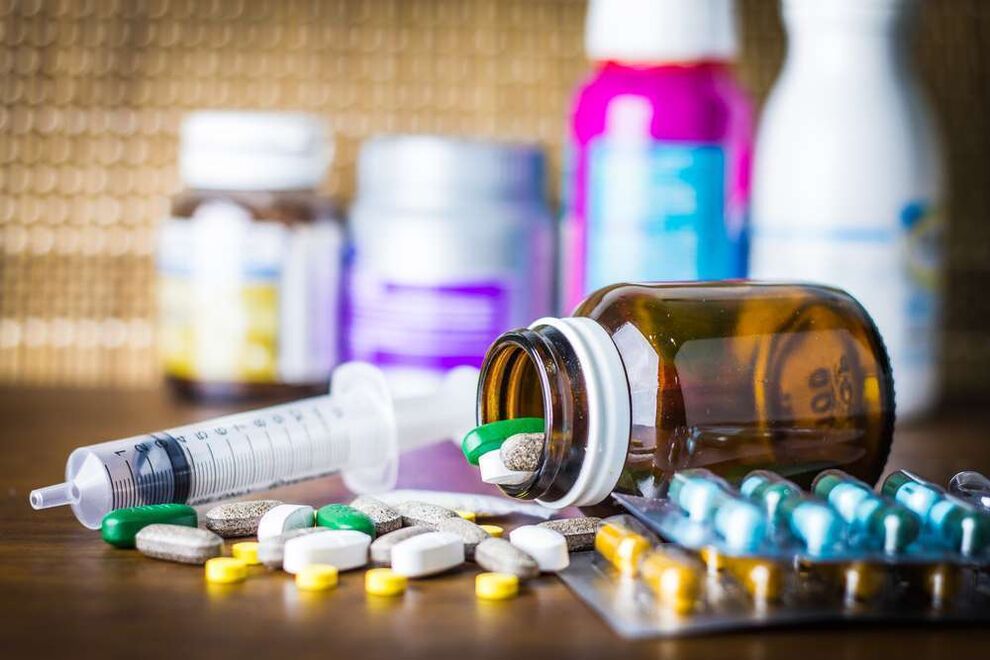
Drug therapy
It is instantly impossible to stop back pain due to osteochondrosis forever, but medical therapy with medication will give rest to the lower back. Powerful anesthetics and anti-inflammatory drugs (NSAIDs) will give an analgesic effect and start the process of fighting inflammation in the spinal regions. Necessary medicines for the treatment of osteochondrosis of the spine:
- Chondroprotectors are active substances that restore cartilage tissue elasticity and vertebral motility.
- Muscle relaxants - soothing spasms of muscle structure.
- Vascular - improves blood circulation and metabolic processes.
- Vitamin complexes and antioxidants.
Only when you use a properly selected therapeutic complex, a positive dynamic can be achieved and the result can be maintained for a long time.
In the treatment of osteochondrosis of the spine, various forms of medicine are used:
- External means: ointments, creams, gels.
- Preparations for internal consumption: capsules, tablets.
- Medication injections.
Surgical intervention
Unfortunately, there are cases of osteochondrosis, when the treatment time is lost and the medication does not give the expected result, and the disease progresses. Then the only solution is surgery. The main reasons for the operation are:
- Removal of an intervertebral hernia that compresses the spinal cord.
- Reduction of the intervertebral fissure to 1/3 of the original size.
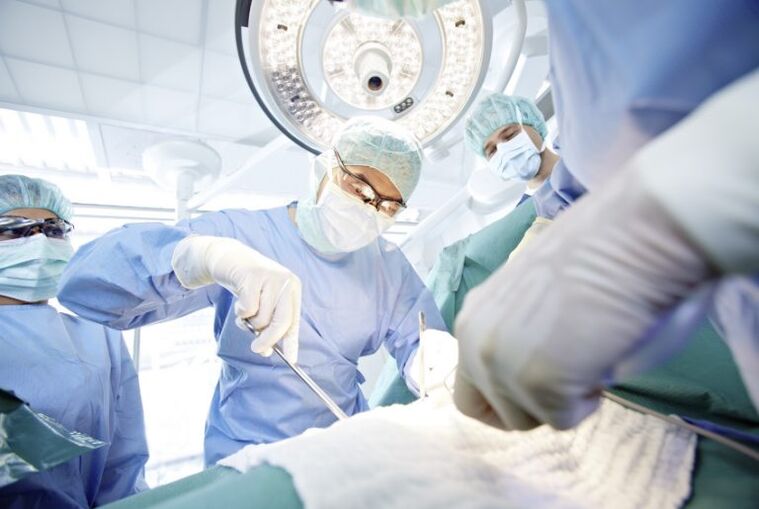
A recommendation for surgical intervention can be prescribed by a physician based on a complete diagnostic picture of the patient and the presence of direct indications for removal of a pathological defect. In spinal surgery, the main place is occupied by the method of discectomy - surgical removal of a deformed disc. Instruments can be microdiscectomy, B-Twin system, or laser evaporation of the nucleus. Rehabilitation after spinal surgery lasts six months.
Gymnastics
An excellent supportive therapy for treating osteochondrosis is gymnastics or exercise therapy. Regular exercise will help:
- Strengthen muscle corsets - this is necessary for an even load on the back.
- Provide stimulation of blood circulation to saturate bone and muscle tissue.
- Develop the right attitude.

It is important to remember that the exercises should be adapted to the diagnosis and comply with the following principles:
- Regularity of execution.
- Smoothing movement, lack of confusion.
- If painful sensations occur, you should reduce the load or stop exercising.
- Monitor your well-being.
Physiotherapy
Physiotherapy is indicated for patients with osteochondrosis of the spine to relieve inflammation and is performed in places where the disease is concentrated. Treatment courses contribute to:
- Increased body resistance.
- Restoration of metabolism in the affected sector.
- Relieve pain and swelling.
- Improving blood vessel circulation.
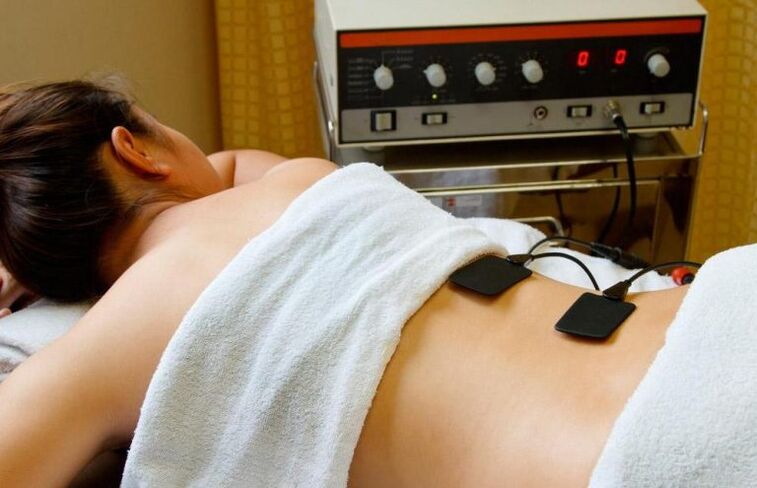
To choose a physiotherapeutic method for the treatment of osteochondrosis, you must clearly define the desired result. Mainly used:
- Laser therapy.
- Ultrasonic exposure.
- Electrical stimulation.
- Magnetotherapy.
Diet
There is no single diet option for patients with osteochondrosis. However, doctors reached a unanimous agreement that the use of products of the following categories with this diagnosis is categorically not recommended:
- Soups with fatty soup.
- Pork and other fatty meats.
- Poultry animal fats (goose, duck).
- Coffee, alcoholic beverages with caffeine.

In addition, alcohol and sweets are limited in the menu.
For an example of a diet, you can take diet number 15. It includes all the vital macronutrients, minerals, vitamins and carbohydrates. The energy value of the right menu should be at the level of 2600-2700 kcal, which is equal to 85-90g of protein, 350-400g of carbohydrates and 90-95g of fat.
Thus, the ideal menu for a patient with osteochondrosis is a combination of balanced non-nutritious foods rich in vitamins and minerals. The food is divided into small portions 6 times.
Traditional treatment
Folk remedies are often used at home to relieve inflammation, get rid of muscle pain and spasms, and generally strengthen the body. There are many recipes for decoctions and infusions of traditional medicine, which are used in three main ways:
- friction;
- fasha;
- herbal baths.
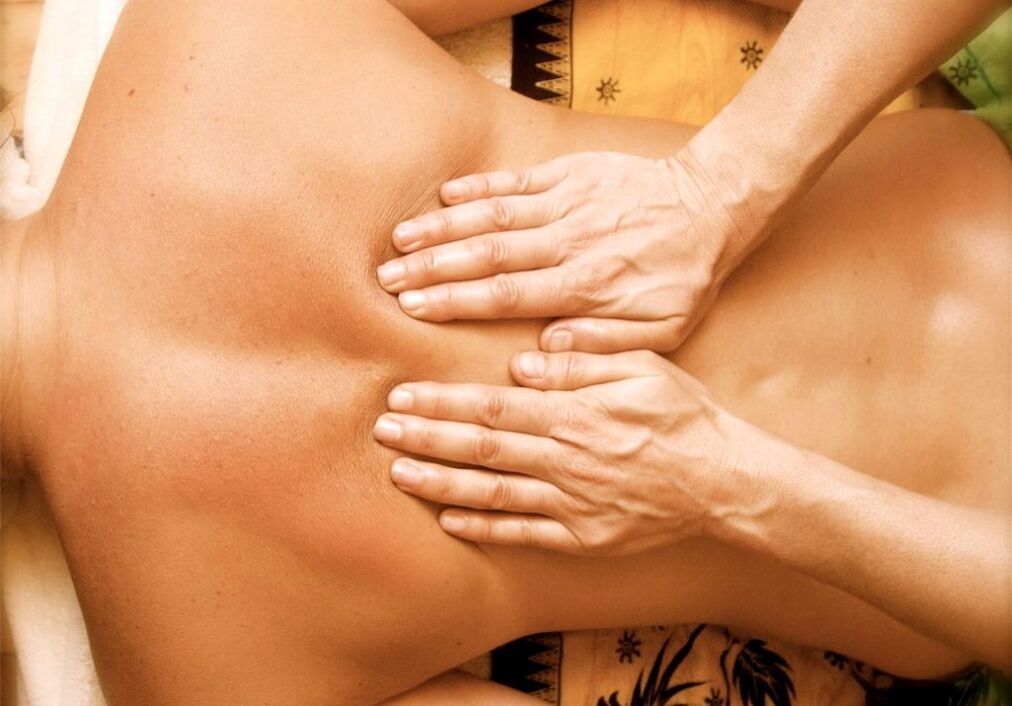
Daily use allows you to get rid of the discomfort in 10-14 days. Conventionally, folk remedies can be divided into systemic and local effects on the body.
System Tools
To affect the whole body and spine, you can use natural systemic preparations in the form of decoctions.
An example of a positive effect is the action of a decoction of yarrow, which relieves pain, fights inflammation and soothes.
Local funds
Local remedies for folk formulations include ointments, infusions for compresses and rubbing. These funds should be mixed according to the recipe and applied to the inflamed area, but only if there is no allergy to the ingredients and skin damage. Among the popular compositions, special attention is paid to compresses of honey, ginger oil in calendula pharmacy solution, a mixture of herb leaves and sage, rubbing horseradish with vodka.
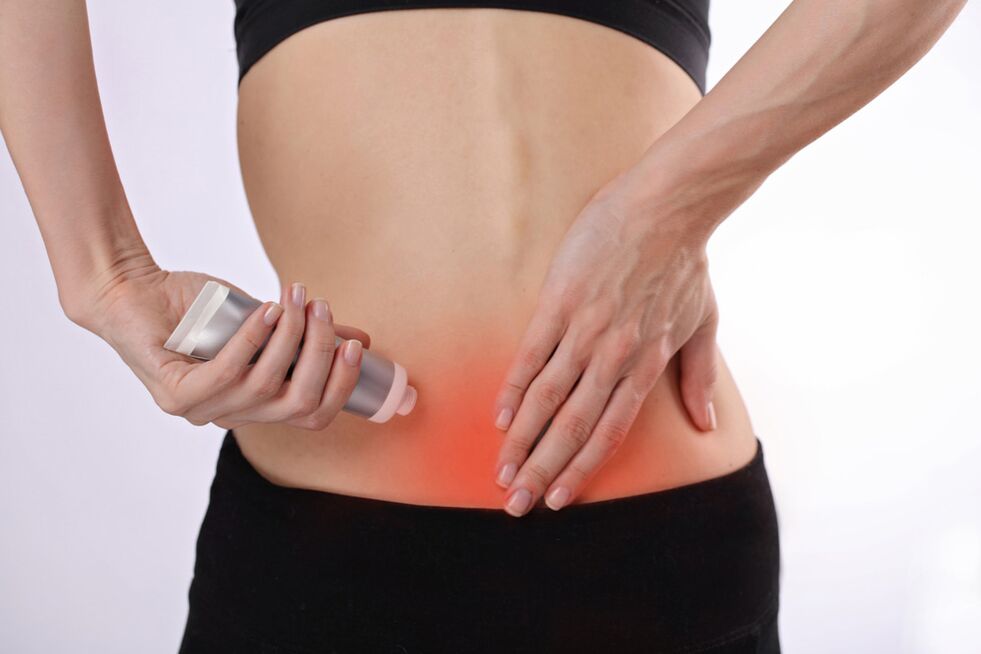
To choose an effective method and a prescription, you should consult your doctor, as home treatment methods are only an integral part of general therapy and have only an ancillary effect.
Prophylaxis
Therapeutic therapy for back diseases can not be long-term success without preventive measures. Even the most effective and expensive medications do not guarantee a reversal of symptoms as a result of a return to the body's daily stress. Therefore, the positive effect should be consolidated and maintained using a few simple rules:
- Do not lift weights over 10 kg.
- Monitor the even distribution of the load on the back muscles.
- Observe rationality and balance in nutrition.
- Take restorative vitamins and active supplements (mucopolysaccharides).
- Develop a regime for changing rest and work.
- Maintain physical activity.
Remember that this category of disease is hidden in nature. Therefore, when a diagnosis is made, osteochondrosis of the spine should not be allowed to take its course, even in the absence of obvious symptoms. Following all the recommendations of the doctor and home care allows you to return to a normal working condition after treatment faster, but continuous monitoring is necessary to prevent a deterioration.


























